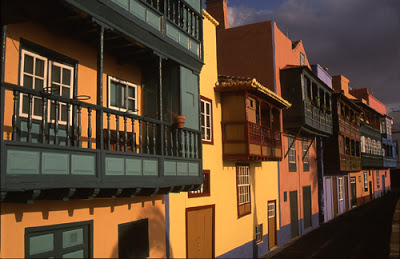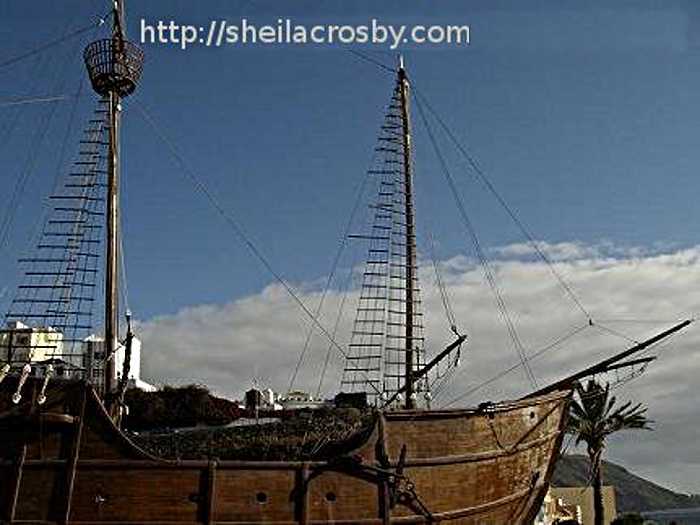
Cruise ships regularly call into Santa Cruz de La Palma, and I thought people might like suggestions on what to see while they’re here. Of course it might be useful to people staying elsewhere on the island, too.
The Tourist Information Office is a distinctive glass building, right outside the entrance to the port, and the staff are very good. But it does tend to attract longish queues when a cruise ship’s just arrived.
People tend to ask about the shopping. Well, there are some interesting shops ( I like Artesanía Christina), but it’s a town of about 12,500, so you’re not going to get Oxford Street. On the other hand we’ve got some lovely historical buildings. If you’ve got an hour or so, stroll along the sea front. You’ll pass the famous balconies, which are about 350 years old, and a small castle. Sir Francis Drake attacked the place in November 1585, but they sent him off with a flea in his ear.
A little father on, turn left at the traffic lights, and you’ll find a replica of Christopher Columbus’s ship, the Santa Maria. It houses a naval museum, which only costs 1€. Beside it, there’s a pretty square, the Plaza Alemeda, which is a very nice place to stop for a coffee.
There are two exits to the square at the opposite end to the ship. The side farthest from the sea leads to the Square and church of St Francis (San Francisco) It’s a lovely collection of historical buildings. The convent was founded 500 years ago, although I think most of the buildings date from the 16th century. The cloisters are now the island’s museum. In addition tot eh permanent collection, they hold all sorts of exhibitions, some of them very good.
The exit from the Plaza Alemeda, which is closer to the sea front and running parallel to it, is the Calle Real. This means “Royal Street” because the three kings travel along it to meet Baby Jesus every Christmas. Rather confusingly, this name doesn’t appear on any of the street signs,. and different bits have different official names – the bit nearest the Alemeda is called Perez de Brito. Whatever you call it, it’s full of nice old buildings, many of which used to be the town houses of stinking rich merchants and nobles. Many are now shops.
You’ll cross a main road that runs at right angles to the Calle Real, running up the hill. This is Avenida El Puente, and it’s the other main shopping street. But if you continue on the Calle Real, (now called Calle O’Daly) You’ll reach the Plaza de España almost immediately. Plaza de España means Spanish Square, and it’s triangular. The posh-looking building at the top of the steps is the Church of the Saviour, built and rebuilt in bits and bobs from the 16th to the 19th century.
On the other side of the road is the Town Hall (1559-1563), the first one in Spain to have an elected council. Pop inside and look at the murals on the stairway.
If you have time for a side trip, go up past the church and have a wander around the old streets higher up the hill. It’s also good aerobic exercise.
A little farther along the Calle Real, you’ll reach the main exhibition room which is a great place to get a unique souvenir, if you’ve got the pennies. The exhibitions last for two weeks each.
Continuing along the Calle Real, you’ll pass several more old manor houses, including Palacio Salazar, which dates from the 16th century. Eventually, you’ll reach the post office. If you look left, you’ll see the Tourist Information Office again.


I’m so glad I randomly found your blog. It looks cool and has great posts.
Excellent site
Be sure I´ll be back. Found this great blog by searching for tourist information
I remember those wonderful balconies, on the sea front where we caught the bus to Cancajos. Your picture is better than mine!